第1章 PREFACE(1)
In presenting to the public the last installment of my travels in the Far East, in 1879, I desire to offer, both to my readers and critics, my grateful acknowledgments for the kindness with which my letters from Japan were received, and to ask for an equally kind and lenient estimate of my present volume, which has been prepared for publication under the heavy shadow of the loss of the beloved and only sister to whom the letters of which it consists were written, and whose able and careful criticism, as well as loving interest, accompanied my former volumes through the press.
It is by her wish that this book has received the title of the "Golden Chersonese," a slightly ambitious one; and I must at once explain that my letters treat of only its western portion, for the very sufficient reason that the interior is unexplored by Europeans, half of it being actually so little known that the latest map gives only the position of its coast-line. I hope, however, that my book will be accepted as an honest attempt to make a popular contribution to the sum of knowledge of a beautiful and little-traveled region, with which the majority of educated people are so little acquainted that it is constantly confounded with the Malay Archipelago, but which is practically under British rule, and is probable destined to afford increasing employment to British capital and enterprise.
The introductory chapter, and the explanatory chapters on Sungei Ujong, Selangor and Perak, contain information of a rather more solid character than is given in my sketches of travel, and are intended to make the letters more intelligible and useful.* The map by Mr. Daly is the result of the most recent surveys, and is published here by permission of the Royal Geographical Society.
[*These chapters are based upon sundry reports and other official papers, and I have largely drawn upon those storehouses of accurate and valuable information, Newbold's "British Settlements in Malacca," and Crawfurd's "Dictionary of the Indian Islands."]
As I traveled under official auspices, and was entertained at the houses of officials everywhere, I feel it to be due to my entertainers to say that I have carefully abstained from giving their views on any subjects on which they may have uttered them in the ease of friendly intercourse, except in two or three trivial instances, in which I have quoted them as my authorities. The opinions expressed are wholly my own, whether right or wrong, and I accept the fullest responsibility for them.
For the sketchy personal descriptions which are here and there given, I am sure of genial forgiveness from my friends in the Malay Peninsula, and from them also I doubt not that I shall receive the most kindly allowance, if, in spite of carefulness, I have fallen into mistakes.
In writing to my sister my first aim was accuracy, and my next to make her see what I saw; but beside the remarkably contradictory statements of the few resident Europeans and my own observations, I had little to help me, and realized every day how much truth there is in the dictum of Socrates--"The body is a hindrance to acquiring knowledge, and sight and hearing are not to be trusted."*
[*Phaedo of Plato. Chapter x.]
This volume is mainly composed of my actual letters, unaltered, except by various omissions and some corrections as to matters of fact. The interest of my visits to the prison and execution ground of Canton, and of my glimpses of Anamese villages, may, I hope, be in some degree communicated to my readers, even though Canton and Saigon are on the beaten track of travelers.
I am quite aware that "Letters" which have not received any literary dress are not altogether satisfactory either to author or reader, for the author sacrifices artistic arrangement and literary merit, and the reader is apt to find himself involved among repetitions, and a multiplicity of minor details, treated in a fashion which he is inclined to term "slipshod;" but, on the whole, I think that descriptions written on the spot, even with their disadvantages, are the best mode of making the reader travel with the traveler, and share his first impressions in their original vividness. With these explanatory remarks I add my little volume to the ever-growing library of the literature of travel.
I. L. B.
FEBRUARY, 1883
INTRODUCTORY CHAPTER
The Aurea Chersonesus--The Conquest of Malacca--The Straits Settlements--The Configuration of the Peninsula--A Terra Incognita--
The Monsoons--Products of the Peninsula--The Great Vampire--Beasts and Reptiles--Malignant and Harmless Insects--Land and Water Birds--
Traditions of Malay Immigration--Wild and Civilized Races--Kafirs--
The Samangs and Orang-outang--Characteristics of the Jakuns--
Babas and Sinkehs--The Malay Physiognomy--Language andLiterature--
Malay Poetry and Music--Malay Astronomy--Education and Law--Malay Sports--Domestic Habits--Weapons--Slavery and Debt Bondage--
Government--"No Information"
Canton and Saigon, and whatever else is comprised in the second half of my title, are on one of the best beaten tracks of travelers, and need no introductory remarks.
But the Golden Chersonese is still somewhat of a terra incognita; there is no point on its mainland at which European steamers call, and the usual conception of it is as a vast and malarious equatorial jungle, sparsely peopled by a race of semi-civilized and treacherous Mohammedans. In fact, it is as little known to most people as it was to myself before I visited it; and as reliable information concerning it exists mainly in valuable volumes now out of print, or scattered through blue books and the Transactions of the Asiatic Society of Singapore, I make no apology for prefacing my letters from the Malay Peninsula with as many brief preliminary statements as shall serve to make them intelligible, requesting those of my readers who are familiar with the subject to skip this chapter altogether.